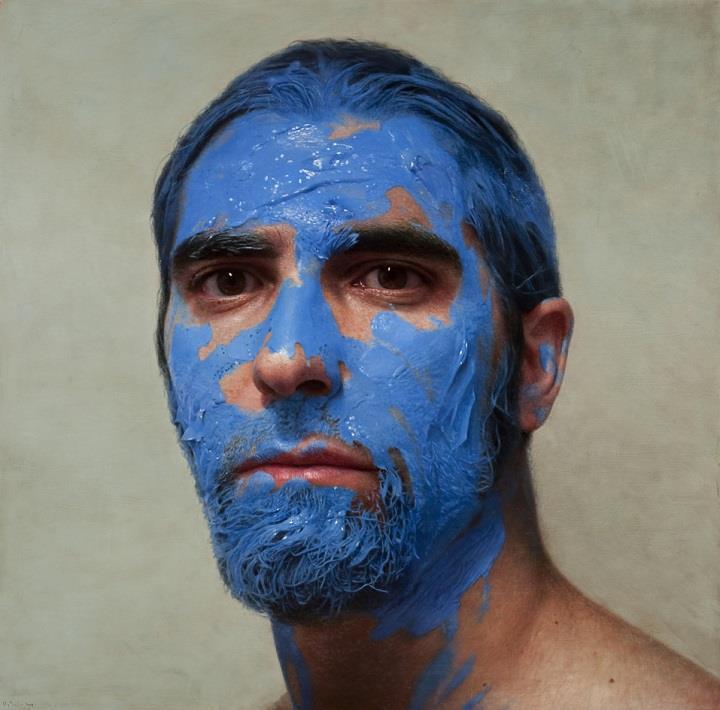

Rembrandt used himself because he was a cheap, readily available model when he was planning certain sorts of composite history paintings or biblical portraits. Along with this is a concern with his artistic status and success.Īnother conjectures about at least some of the images is that they are studies for paintings. This concern shows up in his elegant garb, cloaks, hats, armor, and even in the poses in some of the images. “From youth to old age, Rembrandt scrutinized himself before the mirror, painting, etching, and drawing his changing physique and physiognomy as well as the varying psychological states that reflected the fluctuating fortunes of his life.”Ī first concern that seems evident in these works, as with the previous artists I discussed, is Rembrandt’s social status and his identity as a gentleman. There are numerous speculations about Rembrandt’s preoccupation with self-portraiture.

And why Rembrandt did this is one of the great mysteries of art history. It is an output unique in history most artists produce only a handful of self-portraits, if that. He depicted himself in approximately forty to fifty extant paintings, about thirty-two etchings, and seven drawings. Rembrandt was a particularly prolific self-portrait artist. Her most recent book is Portraits and Persons, and in the excerpt below, she considers Rembrandt’s many self-portraits, and speculates as to why he was so attracted to this art form. Depictions of Venetian Canals in 18th and 19th-Cen.Today marks the would-be 404th birthday of prolific Dutch painter/etcher Rembrandt Harmensz van Rijn, who was born in Leiden in 1606, and passed away in Amsterdam on October 4, 1669.Ĭynthia Freeland is Professor of Philosophy at the University of Houston.
Psychological portraiture windows#
Process Over Product: Unfinished Works as Windows. Restoring the Dignity of the Black in Western Art. From Realism to Post-Impressionism: Millet’s Visu. PARROTS: A Look into Their Presence and Meaning. Giving Substance to Impressionism: Cézanne’s Conve. The Servant's Place in Dutch Genre Paintings. Psychological and Physical Borders and their Effec. RevolutionaryArt for Revolutionary Men. Held in Place: Conflicting Symbolism of the Northe. Goya and the Birth of Modern Psychological Portrai. The Male Artist’s Attitudes Toward Women as a Subject. Diversity within Uniformity: Cultural changes in t. However, the praise is not for the subject’s wealth and status, but rather their intellect and humanity. Psychological portraits still uplift the subject. The purpose of this gallery is to show how after Goya, portraits begin to focus primarily on the emotional state of the subject, rather than an idealistic depiction of their status. Thus the question arises, what is the purpose of this portrait? Is it to praise and uplift Manuel Osorio? Is it a means Goya uses to explore psychological themes? It is both. The location of the portrait isn’t clear either where does the angelic light around Manuel’s face come from? We assume that Goya is absent from the painting, yet the bird carries a piece of paper with Goya’s name on it. Manuel Osorio is calm, but our eyes are drawn to the anxiety and tension created by the cats about to pounce the bird. Goya uses strange symbols, such as cats, birds, and cages, to comment on these themes. By exploring these themes, Goya predates and anticipates the breakthroughs of modern psychology that will arise one-hundred years later. Goya’s portrait of Manuel Osorio manages to portray the stateliness of the Osorio family, while also commenting on death, anxiety, and the nature of art itself. Although Goya was not the first artist to add psychological elements to portraiture, he certainly is the catalyst that allowed future artists to take emotional liberties in their portrait subjects, exploring themes of death, anxiety, and isolation as opposed to older portraits which usually highlighted the status, wealth, and wellbeing of the patrons.






 0 kommentar(er)
0 kommentar(er)
